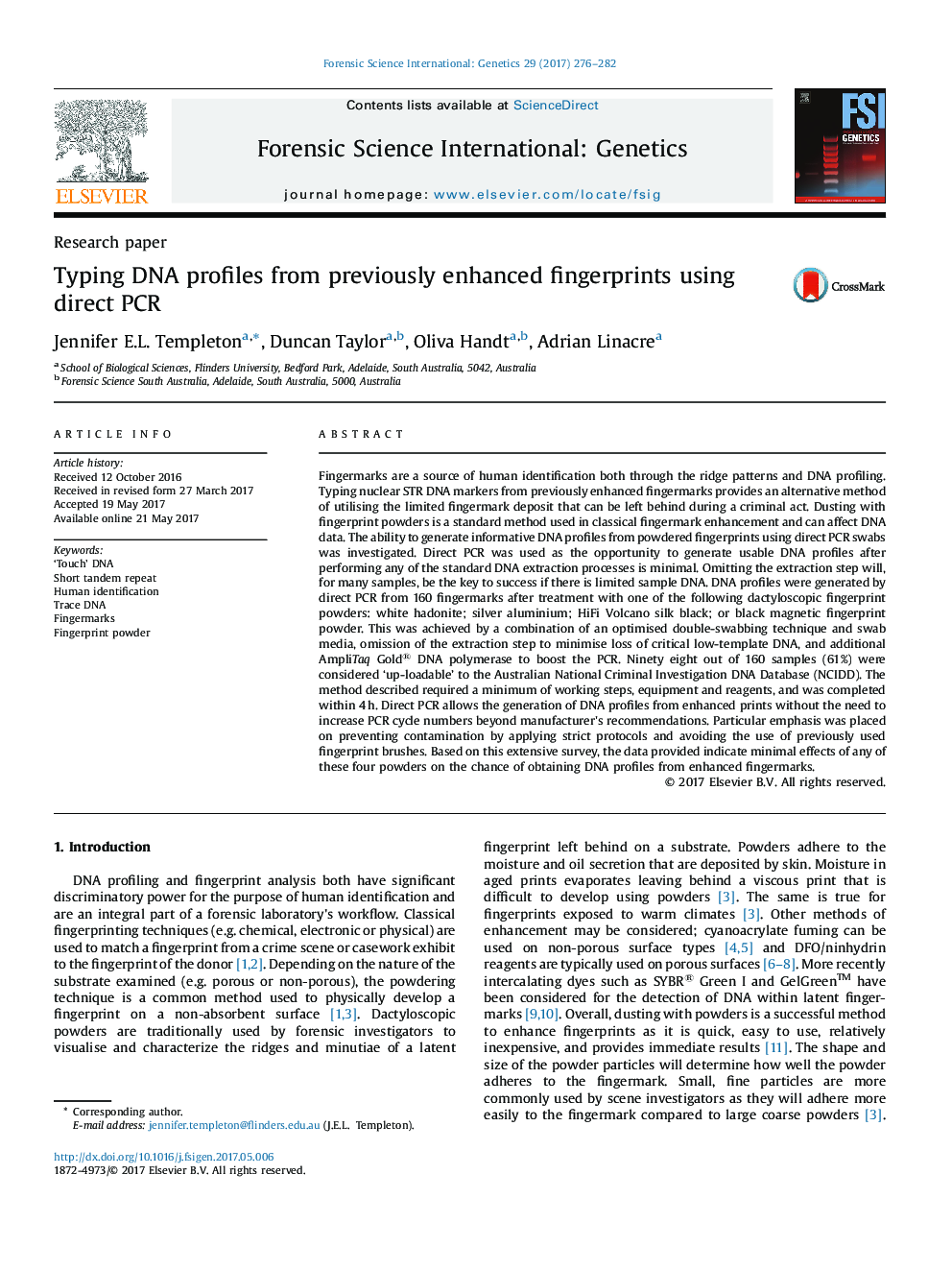| کد مقاله | کد نشریه | سال انتشار | مقاله انگلیسی | نسخه تمام متن |
|---|---|---|---|---|
| 6462770 | 1422149 | 2017 | 7 صفحه PDF | دانلود رایگان |

- Direct PCR can generate meaningful DNA profiles from powdered fingerprints.
- Powders tested did not inhibit the direct PCR amplification.
- Dusting from prints can be performed prior to successful DNA testing.
- Direct PCR speeds up processing of samples, and minimises contamination.
Fingermarks are a source of human identification both through the ridge patterns and DNA profiling. Typing nuclear STR DNA markers from previously enhanced fingermarks provides an alternative method of utilising the limited fingermark deposit that can be left behind during a criminal act. Dusting with fingerprint powders is a standard method used in classical fingermark enhancement and can affect DNA data. The ability to generate informative DNA profiles from powdered fingerprints using direct PCR swabs was investigated. Direct PCR was used as the opportunity to generate usable DNA profiles after performing any of the standard DNA extraction processes is minimal. Omitting the extraction step will, for many samples, be the key to success if there is limited sample DNA. DNA profiles were generated by direct PCR from 160 fingermarks after treatment with one of the following dactyloscopic fingerprint powders: white hadonite; silver aluminium; HiFi Volcano silk black; or black magnetic fingerprint powder. This was achieved by a combination of an optimised double-swabbing technique and swab media, omission of the extraction step to minimise loss of critical low-template DNA, and additional AmpliTaq Gold® DNA polymerase to boost the PCR. Ninety eight out of 160 samples (61%) were considered 'up-loadable' to the Australian National Criminal Investigation DNA Database (NCIDD). The method described required a minimum of working steps, equipment and reagents, and was completed within 4Â h. Direct PCR allows the generation of DNA profiles from enhanced prints without the need to increase PCR cycle numbers beyond manufacturer's recommendations. Particular emphasis was placed on preventing contamination by applying strict protocols and avoiding the use of previously used fingerprint brushes. Based on this extensive survey, the data provided indicate minimal effects of any of these four powders on the chance of obtaining DNA profiles from enhanced fingermarks.
Journal: Forensic Science International: Genetics - Volume 29, July 2017, Pages 276-282